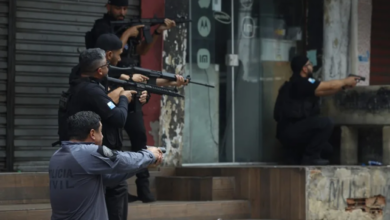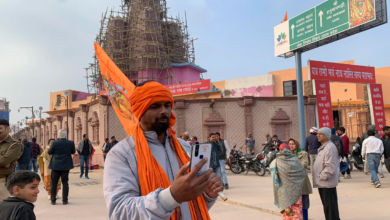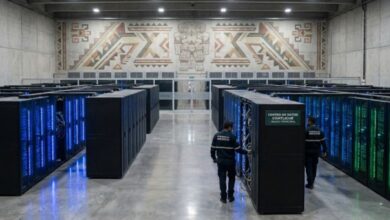Latin America’s AI Art Renaissance: Safeguarding Creativity, Embracing Innovation

Innovators in Latin America have a pressing question: Is artificial intelligence a violation of their culture or a change that cannot be avoided? Instead of stopping art made using AI, many suggest firm rules that promote human creativity. This way, technology stays as a tool and does not become the controller of creation.
Beyond “Treason”: Accepting AI’s Unstoppable Rise
In a global landscape increasingly saturated by artificial intelligence, few arenas have felt its disruptive force more than the artistic world. AI generators quickly create intricate, good artwork, design, sound production, and picture-taking outputs. This development caused intense discussion. Some people call this type of action a disloyal practice to genuine creativity. Yet historical precedent suggests that banning AI would likely fail as thoroughly as attempts to ban digital cameras when they first emerged or earlier outcries against photography replacing painting.
An ongoing exhibition at the Hangar Photography Center in Brussels pushes this debate into the spotlight. For nearly six months, the center has been showcasing the work of 18 artists who combine AI tools with historical imagery and social commentary, reimagining events and figures in fascinating, sometimes unsettling ways. The show was deemed potentially “a rupture, even a treason,” according to an introductory statement by Hangar director Delphine Dumont. Still, one of its curators, Paul de La Marandais, sees no disloyalty in letting AI creations grace the walls of a photography institution. In an interview with EFE, he emphasized that these works remain thoroughly artistic endeavors because the creators behind them use AI to express ideas, not to replace their vision.
Such sentiments resonate across Latin America, where hybrid artistic forms have thrived for centuries—new creative tools, whether film cameras or modern digital platforms, often trigger cycles of mistrust. However, as De La Marandais suggests, the answer is not to outlaw the new medium but to consider how technology can complement existing craft. Rather than brand AI as “treason,” we might do better to set boundaries that preserve the human spark, ensuring the machine remains an instrument, not an overlord.
A Familiar Collision of Old and New
Much like the 19th-century clash between painting and photography, the debate over AI-driven art reflects cultural anxieties about losing traditional methods. In Latin America, artistic expression did well where the past and present met. Ceremonial paintings from native people mixed with Catholic themes. Some famous people, like Diego Rivera, supported radical modernist murals. The area’s creativity did well as it took in different influences and refined them into something new.
Photography was once derided for threatening the painter’s craft. Painting continued and developed, including impressionism, expressionism, and many modern styles. At the same time, photography became an art form. It recorded facts that a paintbrush could not easily communicate. Current artificial intelligence creates similar fear. Some are concerned that the technology’s quick work could change art into simple algorithmic outputs. Others see it as an opportunity to expand creative horizons, given that human artists still control conceptualization and curation.
Hangar’s exhibition demonstrates this fusion. From re-creations of iconic photographs, like Robert Capa’s “Muerte de un miliciano,” to artistically conjured scenes of Fidel Castro’s rise to power, visitors witness how AI rearranges historical elements into new narratives. De La Marandais, in his comments to EFE, notes these pieces “are not photographs, because a camera didn’t take them,” yet they remain loaded with meaning. In a Latin American context, this phenomenon could help “fill gaps” in official histories, shining light on ignored or censored events—an ambition that resonates in countries grappling with the legacies of dictatorship and colonial erasure.
Setting Guidelines to Preserve Humanity
Complete AI prohibitions are impractical. The reasonable next step is setting explicit ethical guidelines to defend authentic creative works. In Latin America, this discussion demands immediate attention. The region often uses artistic expression to address societal problems, from human rights violations to system inequalities. AI can magnify those narratives, yet it can also manipulate or fabricate stories in misleading ways.
Rather than yield to cynicism, many artists and curators favor strict standards that keep human agency intact. One approach is to ensure transparency about when AI enters the process so viewers understand the extent of machine involvement. Another idea is that if an image can be captured naturally with a camera, as De La Marandais put it to EFE, “then do it with a camera,” thus limiting AI use to imaginative leaps that film or digital equipment can’t achieve as easily. Such an ethos preserves authenticity while welcoming innovation.
Another key safeguard involves crediting sources. AI models often draw from vast databases of existing images, styles, or works. Acknowledging such influences may reduce ethical friction if an artist uses an algorithm that scrapes thousands of examples. This echoes age-old practices where cultural borrowing was transparent. For example, artisans acknowledge ancestral techniques when indigenous patterns appear in modern textiles. Applying comparable norms to AI would help prevent a creative “Wild West” in which uncredited data exploitation runs rampant.
Finally, focusing on purposeful art can mitigate sensationalism. Many Latin American creators have a powerful tradition of forging art that comments on social injustice, ecological crises, or historical memory. Embedding these principles into AI-driven projects can ensure that technology amplifies activism rather than trivializes it. Brazilian artist Claudia Jaguaribe, featured in the Hangar show, uses AI to conjure collage-like faces of neglected women from Brazil’s past—political prisoners, lawyers, and guerrilla leaders—so their stories resonate in today’s consciousness. This shows that AI functions as a tool to regain stories. It is not a danger to genuine creativity.
Latin America’s Guiding Role in AI Art
Latin American art is at a turning point. The blending of cultures through many centuries meets the arrival of fast-developing artificial intelligence. As the Hangar exhibition reminds us, “filling the gaps in history” can be a powerful way to challenge official narratives and champion marginalized communities. Yet, with great power comes great responsibility. Artists, curators, and societies must decide how AI can honor the region’s vibrant heritage of telling stories that matter.
The conversation is no longer about whether AI will flourish—it undoubtedly will. Instead, the question is how to shape its use so that human input remains paramount. Censoring or attempting to stop AI is about as effective as forbidding the shift from analog to digital photography once was. Latin America can show others how to accept current media formats. It will also insist on moral standards. Such standards include plainly labeling work developed with artificial intelligence. Standards also include a call for responsibility when data is reused. The principle that people are the decision-makers must remain.
Visionary artists blend AI with indigenous symbolism across Brazil, Argentina, Mexico, Colombia, and beyond, forging contemporary statements combining the modern and the ancestral. Their work echoes the cyclical lesson of history: each time a “threat” to tradition arrives, creativity reinvents itself, forging innovative paths and revealing fresh perspectives. Just as painting endured photography, photography can endure AI, too. The energy once poured into condemnation could instead fuel guidelines that elevate the best of machine-assisted art while preserving the vital soul of human artistry.
Also Read: Bolivia’s Wilancha: Ancient Ritual, Sacred Llamas, Living Tradition
Where does that leave us? Perhaps with renewed confidence that change in the arts is inevitable but not cataclysmic. A strong ethical framework that acknowledges technology’s role without overshadowing the human voice can ensure AI remains an instrument of expression rather than an era-defining menace. And in a culturally vibrant region like Latin America—where art has always been a vehicle for resilience, cultural exchange, and social commentary—this pivot toward responsible AI usage could unlock a profound new chapter in creative expression.





